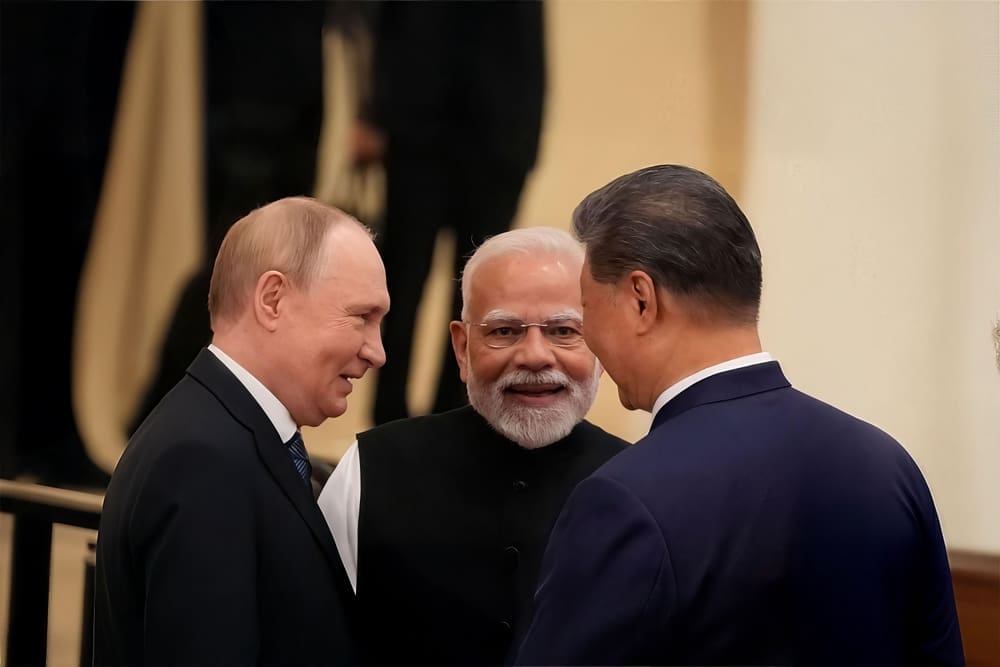Executive Summary
The Story So Far
Why This Matters
Who Thinks What?
US President Donald Trump has urged the European Union to implement tariffs of up to 100% on goods from China and India as a strategy to compel Russian President Vladimir Putin to end the ongoing conflict in Ukraine. The demand was made during a meeting between US and EU officials on Tuesday, where options to intensify economic pressure on Russia were discussed. This development, initially reported by the Financial Times, was confirmed by a source familiar with the discussions to the BBC.
Context of Escalating Conflict
President Trump’s proposal comes amid his ongoing efforts to broker a peace agreement between Moscow and Kyiv, and as Russia’s military actions in Ukraine have intensified. Over the past weekend, Ukraine experienced its heaviest aerial bombardment since the war began, with Russian forces reportedly deploying at least 810 drones and 13 missiles.
Among the recent attacks, Ukraine’s main government building in Kyiv was struck by a Russian missile, an event viewed as both symbolic and a significant escalation of aggression by the Kremlin. Separately, more than 20 civilians were killed in the eastern Donbas region on Tuesday by a Russian glide bomb while queuing to collect pensions.
Diplomatic and Economic Maneuvers
President Trump has indicated plans to speak with President Putin this week or early next week. Following the weekend’s bombardments, he expressed his dissatisfaction with the situation and threatened harsher sanctions against the Kremlin. While he has previously issued such threats, concrete actions have not always followed, despite Putin reportedly ignoring deadlines and warnings.
A highly anticipated summit between President Trump and President Putin in Alaska last month concluded without a peace deal. The request to the European Union aligns with earlier remarks from US Treasury Secretary Scott Bessent, who stated Washington’s readiness to escalate economic pressure but emphasized the need for stronger European support.
Implications for Global Trade
China and India are significant purchasers of Russian oil, a trade relationship that plays a crucial role in sustaining the Russian economy. The United States previously imposed a 50% tariff on goods from India last month, which included a 25% penalty related to India’s transactions with Russia.
Despite the European Union’s stated goal to reduce its reliance on Russian energy, approximately 19% of its natural gas imports still originate from Russia. Should the EU adopt these proposed tariffs on China and India, it would represent a notable shift from its current strategy of isolating Russia primarily through sanctions rather than broad trade levies.
Concurrently, President Trump announced on Tuesday that the US and India are continuing negotiations to address trade barriers between the two nations. He expects to speak with Indian Prime Minister Narendra Modi in the coming weeks and anticipates a “successful conclusion” to their trade talks, a sentiment echoed by Modi on social media.
President Trump’s call for the European Union to impose significant tariffs on China and India underscores a strategic pivot aimed at leveraging global trade to influence the conflict in Ukraine. This move, if adopted, would mark a substantial change in the international economic landscape and the approach to pressuring Russia, while also highlighting ongoing trade discussions between the US and India.








